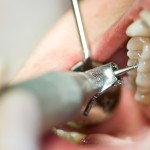
Clinicians regularly encounter deep carious cavities which can lead to pulp exposure if the caries is completely removed. This may lead to pulpectomy and root canal treatment. However the pulp possess a regenerative ability so stepwise approaches to caries removal have been investigated. The aim of this review was to investigate the best possible methods and materials for stepwise excavation of deep caries in permanent teeth.
Searches were conducted in the Medline and Igaku Chuo Zasshi (Japanese) databases and the reference list of identified studies. Data from randomised controlled trials and controlled clinical trials and case series conducted in permanent teeth were included. 13 studies were included and a qualitative summary of the evidence presented.
They concluded:
Our research suggests that stepwise excavation is effective for pulp preservation in extremely deep caries that do not show clinical symptoms of irreversible pulpitis. Calcium hydroxide, as well as antimicrobials and polycarboxylate cement combined with tannin-fluoride preparation, is effective in reducing bacteria and promoting remineralization of the carious dentin that remained after stepwise excavation. Further clinical trials with a high level of study design should be conducted to identify the best methods of removing carious dentin using stepwise excavation.
Hayashi M, Fujitani M, Yamaki C, Momoi Y. Ways of enhancing pulp preservation by stepwise excavation – a systematic review. J Dent. 2011 Feb;39(2):95-107.
Related Cochrane review
Ricketts D, Kidd E, Innes NPT, Clarkson JE. Complete or ultraconservative removal of decayed tissue in unfilled teeth. Cochrane Database of Systematic Reviews 2006, Issue 3. Art. No.: CD003808. DOI: 10.1002/14651858.CD003808.pub2.
